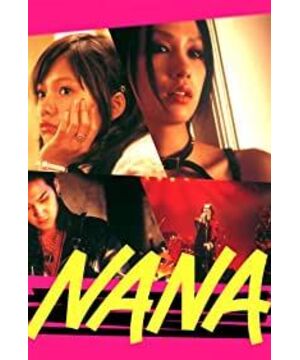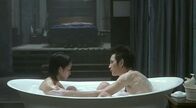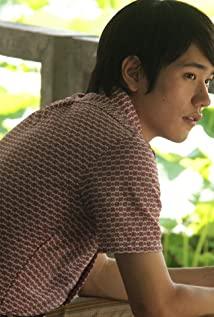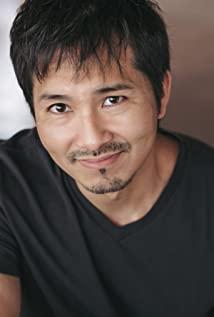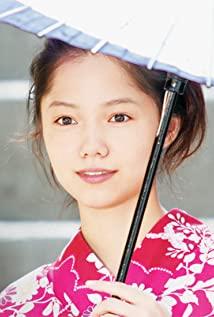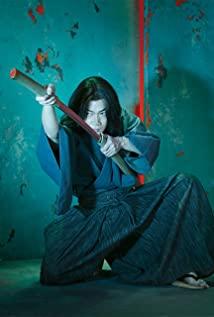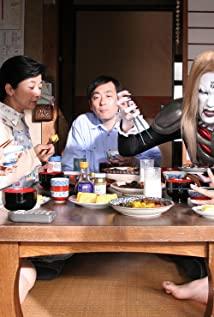/ not necessarily donkey donkey November 2005
1. Talking about Hollywood in 2005 from cosplay and "NANA" fashion trends
, Rodriguez is extremely Reverently brought Frank Miller's noir comic "Sin City" to the screen and earned both fame and fortune. In Japan, "NANA", adapted from the manga of the same name by the most popular girl manga artist Yazawa Ai, detonated the box office. One of the topics in the film industry in 2005 - the fashion of comics adapted movies.
In 2003, the success of Kitamura Longping's "Hundred People Killing Girls" gave the Japanese film industry a shot of cardiotonic. Miss Aya Ueto's "An Yun" shape of the assassin who slashes horizontally and vertically is not much better than the Uma bride in "Kill Bill", and it also makes anime fans ecstatic. The deteriorating Japanese movies have thus found a way to resurrect -- cosplay (Note ①).
In 2004, Matsuo Suzuki's "The Gate of Love" (original painting by Hanyu Yu), more frankly and frankly with "cosplay" and "manga doujinshi (Note ②)" as the theme, the beautiful boy Matsuda Ryuhei, doll-like "cards". "Wai Yi" girl Sakai Wakana is a rare cos talent. In the same year, Yazawa Ai's manga adaptation of "The Last Strings of the Moon" featured the beautiful boy Naomiya Hiroki and the boy killer Kuriyama Chiaki (the two also starred in "Hundred People Killing Girls 1 & 2"). The cos show of handsome men and handsome women is the key to the success of this type of film.
Matsuo Suzuki stated bluntly in "The Gate of Love": boy manga is the patent of children; girl manga is the mainstream in the past and present. The defeat of "Hundred People Killing Girls 2" and the unprecedented popularity of "NANA" recently confirmed Matsuo's prophecy. Adapted from Xiaoshanxiong's old-fashioned fighting manga "Hundred People Killing Girls", the sequel is losing a first-class director like Kitamura Ryuping, and the rest of the OUT boy manga cos naturally no one buys it. And "NANA" is completely different. It is very popular among young female audiences. Even if it does not have the real charm of the movie, as long as you work hard in the role-playing aspect, while retaining the invincible fashion and avant-garde elements in the original work, success is a matter of course.
Following the small test of "The Last String of Moon", Yazawa Ai's most IN "NANA" brings together the beautiful boys Seimiya Hiroki, Matsuda Ryuhei, Yushan Tetsuji, and the "Queen Blessed by God" (God Save). The Queen) Nakajima Mika, the ignorant girl Miyazaki Kiyoshi who resonated with the audience, is by no means an official cosplay feast. Clothes of punk, visual rock, Vivienne Westwood, the fetishism and idolatry of Shi Zeai (just like a fashion "Bible"), and the worship behavior of the protagonist of "NANA" (for example, the protagonist Nana worships Nana, Nana's worship of "Sex Pistols"), and the audience's worship of "NANA", reached a trinity rhythm. The launch of the film version can be said to have heated up this rhythm. The costumes, music, and beautiful boys in the original painting, which were originally loyal to reality, have been dazzling, dazzling, but reasonable and realistic interpretations. At present, the box office of "NANA" has reached nearly 4 billion yen, surpassing the pure love movie "Train Man" and is expected to become the top-grossing champion of this year's Japanese film.
The box-office success of the girl manga movie cos was a success, while the boy manga filmization was a complete failure, forming a strong contrast with the former. In addition to "Hundred People Killing Girls 2", which has been criticized by others, in recent years, there have also been disappointing movies such as "Ninja Elf" adapted from Fujiko Fujio A's comics, and "Dragon Head" by Iida Rangji (original painting by Mochizuki Mine Taro). If boy comics want to win the box office, it seems that they have to resort to the theatrical version of animated movies.
So, are boy manga really not suitable for adaptation into live-action movies? Is the manga adaptation just a funky cosplay? Even if this fact is established, the pivotal position of boy manga in the Japanese film industry is still unshakable. According to the author's observation, despite the lack of models of successful filmization, boy manga has had a considerable impact on Japanese films, especially those after the 1990s.
2. The animation tendencies of the new generation of directors
Japanese film, since its birth, is known for its delicate texture and slow rhythm, which is its greatest characteristic. The smooth and dull cuts, the quiet and muted pictures, and the lack of dramatic contradictions minimize the distance between the screen and reality. Kenji Mizoguchi's "One Shot Doctrine", panoramic shots, Ozu Yasujiro's fixed-camera long shots, etc., the simple and natural slow style constitutes the characteristics of Japanese film art, that is, the embodiment of the so-called Japanese character.
The "slow child" of the traditional nature of Japanese film has undergone two "speed ups" of conscious innovation in the pace of modernization. The first occurred in the "Japanese New Wave" (1960s) influenced by the European New Wave, and the second occurred after the 1990s.
In Tsukamoto Shinya's "Iron Man", the protagonist pulls out an iron filing from the skin of his face, the penis is turned into an auger, and the back heel gives birth to a jet; , making a lot of noise in the basketball arena, and he went berserk, and jumped into the blue sky like he was weightless; in Ken Watanabe's "Blood Gun", the killer Hayama vomited out the bullet he swallowed 20 years ago at a critical moment. ... These bridges can be explained by the logic of surrealism and black humor, but for the viewers and authors deeply immersed in the animation culture, they are tacit and natural plots.
Film creators in the 1990s often integrated the thinking concept and interest of animation in their film creation, sometimes unconsciously. The boy's manga-style imagination and the witty exaggeration of Japanese-style manga intensify the rhythm of Japanese films. This is a distinctive feature of Japanese contemporary cinema, especially the works of cutting-edge directors.
Ryuhei Kitamura is currently ranked first among emerging Japanese directors. This action film director, who set foot in the film industry in his twenties, has been highly regarded by Dongbao in recent years. From "One Hundred People Killing Girls" to "Godzilla"'s final work, its super status of "ace leader" has become more and more consolidated. Ryuhei Kitamura, who was born in 1969, is keen on animation and video games, which is not only reflected in his tendency towards animation in movies (more than 80% of his works are based on boy comics, and he made a cameo for the game "Metal Gear: Twin Snakes" in short films). The image style and connotation are even more visible: his works have strong visual impact, smooth rhythm, not annoying, pay attention to the beauty of form and shape, and express the "immersive" of fighting scenes is a good show. Its "immersive" refers to the "interaction" between players and machines similar to video games.
Boys fighting comics and fighting games are inexhaustible materials for Kitamura. The fighting charm in his images is not in the fighting itself, but in the extravagant decoration on the eve of the fighting. He often chooses open spaces in forests, mountain slopes, closed secret rooms, etc. as battle locations, and pays special attention to the creation of atmosphere. The meticulous sculpting of fighting scenes and the challenger's "confrontation" shows a completely different interest from the usual action movies.
The one who wanted to be with Kitamura Ryohei was the great director Takashi Miike. He is a violent cult, but he is actually a genius with an anime quality in his bones. From "Dead Or Alive" to "Killer Aichi" (original drawing by Hideo Yamamoto), Miike's cult talent has blossomed in the gestation of boy manga. At the end of "Dead Or Alive I", which was originally a realistic style, the confrontation between the two protagonists suddenly became superhuman and absurd. From carrying a bazooka on the shoulder to "qigong wave", the usual plot in the boy's comics was improved by Miike. , unexpectedly rose to a new height. Since then, Miike Imaging's earlier realistic style has been shaken, he got rid of the shackles of the gangster film mode, and finally changed from a violent film director to a Japanese cult film master. From "Bull's Tau", "Zebra Man" (Reiji Yamada's comics) to the most recent "Monster War" (Mizuki Shigeru's original painting), Miike adopts the perspective of "children" in a charming, boyish comic style, and is in line with his own artistic conception. Sadly teasing reality in a consistent fictional "anime" plot. In addition, it is worth mentioning that the heroine of Miike's most important work "Visitor Q" is Chunju Uchida, a cartoonist of Qinglintang.
Other up-and-coming directors include Yukihiko Tsutsumi, who is good at making suspense and reasoning films and has established his “Tsubaki-style” psychedelic images for “The Case of the Kindaichi Teenager” (original painting by Sato Fumiya). Horror film director Yoji Iida, mentioned earlier that he brought Mochizuki Mine Taro's masterpiece to the screen. Takashi Ishii, who has changed from a cartoonist to a director, is an advertiser who is a complete "animeist" Katsuto Ishii (last year he launched "The Taste of Tea", which tells the story of a "wife" becoming a cartoonist), mentioned above Kensaku Watanabe, the director of "The Scarlet Gun", and Xue Dingxun, who has some retro tendencies recently, are really crowded.
In addition to local directors, there are also directors from other countries who get nutrients from Japanese manga. For example, the famous Korean director Park Chan-wook's "Old Boy", which won the Cannes Jury Prize in recent years, originated from Japanese manga.
What exactly does the so-called "anime texture" in a movie mean? Let's take a look at what Chinese writer A Cheng, one of the judges of this year's Venice Film Festival, commented on Park Zanxu's "Beloved This Son". He said, "A good movie should be about 'subtraction'. What he (Park Chan-wook) does is 'addition'. It's like a plateau 5,000 meters above Tibet, but it doesn't look any different from a plain."
This reminds me of photography and The essential difference between painting: photography is like a kind of "subtraction", and painting is similar to "addition". Park Zanxu's "addition", in a sense, is about the portrayal of the "animation texture" in the movie.
3. Comics to Movies: Giving Souls
The origins of Japanese movies and comics can be traced back to the early tradition of film creation.
Mizoguchi Kenji, Itami Mansaku, Shindo Kanto, Ichikawa Kun, Kurosawa Akira... These film giants who used to be all-powerful, also have extraordinary talents in painting. In the early days of Japanese movies, before shooting, the director generally drew a sketch of each sub-shot - something called "movie painting", and then carried out the actual shooting. The author has been fortunate enough to have seen the manuscripts of “Shadow Paintings” by Hiroshi Inagaki, Kihachi Okamoto, and Itami Shisan (Note ③), their compositional outlines, the setting of the demeanor and movements of the characters, as well as the “perspective” sets and “speed lines” (Note ④). ” application, it’s hard not to be reminiscent of Japanese manga. It's no wonder that cartoonists Takashi Ishii, Chunju Uchida and others confidently enter the film industry and act as directors!
When the comic was adapted into a movie, it was similar to the bridge foundation of the "movie painting", which played a role like a movie draft. The innate advantages of composition, character dialogue, and screen cutting in comics are incomparable to the first drafts of text.
Iwasaki Chang once talked about the relationship between Japanese film and literature in "History of Japanese Films". He believed that the film writers were probably holding an inferiority complex and hoped to refer to the artistic level of their works by adapting "advanced" literary works ( Note ⑤). To be more specific, that the film is a relatively popular art below the literary level, which is still true even today, according to the author's observation. Today, the relationship between comics and movies, which play the same role as literature, is just the opposite of the relationship between literature and movies. Movies derived from comics are probably more valuable than comics.
The world-recognized achievement of Park Chan-wook's "Old Boy" is the best proof. In Japan, such cases are more common--
Fukasaku Shinji's "Battle Royale" is adapted from the comics of Takamami Guangchun. Regardless of its popularity or artistic value, the movie version is far above the original. The original manga tells the story of how a country called the "Greater East Asian Republic" forced children to kill. Fukasaku and his son have made substantial changes to the original work, setting time and space as Japan in the future. In the name of "violence control", the government imprisoned 42 students in a class on an isolated island and ordered them to kill each other. The last surviving one was The winner of this killing battle. This film is actually an expansion and variation of Fukasaku's art world. Based on comics, it is a window for Fukasuo to directly communicate with teenagers. In the background of its rare violence, Shen Zuo plays a beautiful hymn of human nature, and draws up an extraordinary prophecy about human selfishness, jealousy, betrayal, and cannibalism, and in this way alludes to the hidden crisis in Japanese society.
Miike Takashi's "Killer Aichi" is also born out of violent comics. Miike embeds artistic tension, Miike's Sadism and a black harmony-like soul for this unsightly, vulgar and filthy filthy object--with its stream of consciousness and absurd and exaggerated methods, it erases people The concept of moral conscience, based on the pathological dependence between the abuser and the masochist, induces a "city of monsters" under the shadow of modern civilized society. That is to say: in the depths of each of our souls, there is a demon living in hibernation. Shiota Akihiko's anti-ethical "Moon Song", adapted from the manga of Masahiko Kikuni. With a simple and delicate documentary lens, Yantian composes a masochism story that is beautiful and sad, blasphemous with youth and purity, wandering in the gap between heaven and hell, and there is only a thin line between beauty and ugliness. Such artistic charm is at a height that is difficult to reach in the original comics.
In the field of Japanese independent films and underground films, manga is also a very popular video material. Filmmakers with traditional techniques like Shinji Aoyama and Toshiaki Toyoda, who shoot "stuffy films" and lack the quality of anime, have also made well-known movies based on comics. The new generation of independent director Okuhara Hiroshi made a "Ride in a Blue Car" last year, which was adapted from a girl's manga. Although it was not very successful, compared to the current so-called mainstream movies such as "The Last String Moon" and "NANA" cos show, at least Much clarification.
Note ①: The abbreviation of costume play refers to the role-playing of anime characters dressed in costumes of related anime characters.
Note ②: Refers to a group of people with the same interests who have assembled their own works into a book, which is not published by a commercial publishing house but printed at their own expense. Those who circulate among the fans can be called doujinshi.
Note ③: From the documentary "Female Tax Collector 2": directed by Zhou Fangzhengxing in 1988.
Note ④: One of the comic symbols is an effect line used to express the sense of speed.
Note ⑤: "Japanese Film History", p. 115, China Film Press, 1981 edition.
http://www.blogcn.com/User9/buyidinglvlv/index.html
View more about Nana reviews


